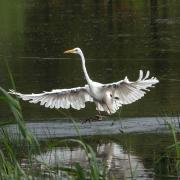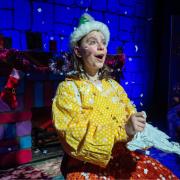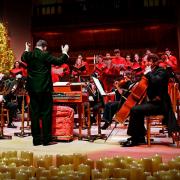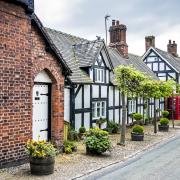Garden birds are any species of bird visiting for food and shelter regularly. Every garden attracts a different set of birds depending on the plants, trees and shrubs, whether extra food is provided, what water sources there are and surrounding habitats.
In recent years, numbers of our once-common birds have dropped dramatically in the wake of increased development, intensification of farming and habitat loss. However, garden birds do have a lifeline. Together, the 16 million gardens across the UK form an area for wildlife larger than all our National Nature Reserves combined.
This patchwork of habitats helps wildlife move freely, forming a vast living landscape that links urban green spaces with wider countryside. Encouraging birds to visit your garden is easy and a great way to help.

WATCH THE BIRDIE
Typically, males are more distinguishable than females. These are the UK's most common garden visitors.
HOUSE SPARROW
Males are streaky brown above and grey below, with chestnut-and-white wings, a black bib and a grey cap. Females and juveniles are duller.
STARLING
Adults are oily-black with a purple-and-green sheen, and tiny, beige spots in winter. Juveniles are dark grey-brown.
BLUE TIT
Green-blue above and yellow below, with a blue cap, white cheeks, black eye stripes, and a blue tail and wings.
BLACKBIRD
Males are black with a yellow bill and yellow ring around the eye. Females and juveniles are dark brown.
WOODPIGEON
Grey above, with a pink breast, white neck patch and white patches on the wings
GOLDFINCH
Gingery-brown above and pale below, with black-and-yellow wings, a black crown, white cheeks and a red face.
CHAFFINCH
Males have blue-grey crowns, brown backs and pink breasts. Females are brown, with white shoulder patches and wingbars.
GREAT TIT
Green above and yellow below, with a black head, white cheeks, and black stripe down its breast.
ROBIN
Brown above, with a white belly and red breast. Juveniles are mottled gold and brown.
Other species that visit gardens include long-tailed tits, carrion crows, magpies, jackdaws, collared doves, dunnocks, wrens, song thrushes, greenfinches, coal tits, swifts, house martins, and green and great spotted woodpeckers. Find out more about these birds on our wildlife explorer: cheshirewildlifetrust.org.uk/wildlife-explorer.

MAKE THEM WELCOME
Whether you have a small, city patch or acres of fields, you can encourage birds to visit your garden. Adding suitable bird food on a bird table and in feeders – even one that sticks to a window – will do the trick.
Birds eat different things: try seeds for sparrows and finches, fat balls for tits, and fruit and worms for thrushes and robins. As long as it’s not mouldy, you can also pop out leftovers such as fruit cake, unsalted nuts, and over-ripe apples and pears.
The amount of food you need to supply will vary depending on the season and weather. Try to put out only what will get eaten, so there’s nothing left to go off.
Provide fresh water and make sure you clean feeders and tables regularly to avoid disease. Provide places for birds to nest and rest safely by planting native trees and shrubs or putting up nest boxes or swift boxes.
Some birds can also munch on seed heads, so leaving them for the birds is appreciated.
Adding a pond to your garden, big or small can become a feeding ground for birds. A washing-up bowl, a large plant pot, or a disused sink could all be repurposed as ponds, providing you make sure creatures can get in and out.
Let your grass grow for a few weeks. Peppered with flowers, long grass is one of the rarest habitats in our well-tended gardens, yet it is incredibly beneficial for wildlife. Patches of long grass encourage different plant species to grow, help insects to thrive and create feeding opportunities for birds and small mammals.
The Cheshire Wildlife Trust website has more advice on how to provide a wildlife-friendly space. See echeshirewildlifetrust.org.uk/actions



























